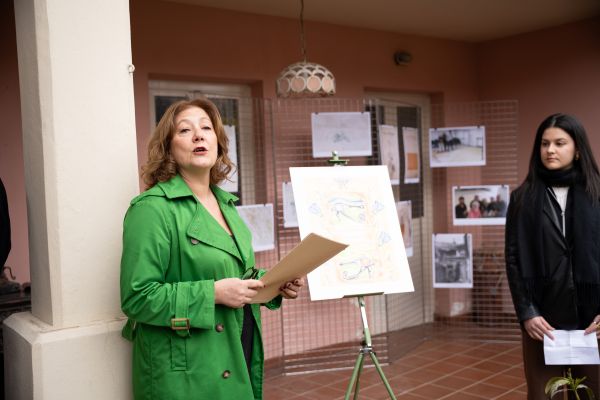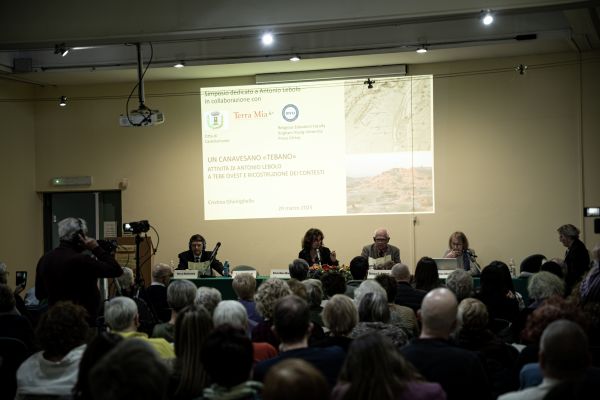Lebolo Conference
Kerry Muhlestein
Kerry Muhlestein (kerry_muhlestein@byu.edu) is a professor of ancient scripture at Brigham Young University.
In 1820 Antonio Lebolo had his hands full while living in the Luxor area of Egypt—most often with antiquities he acquired and sent to various European countries. Following Napoleon’s withdrawal from Egypt, men like Bernardino Drovetti went into Egypt in order to extract its antiquities for European nations. Lebolo became a friend and collaborator of Drovetti in Egypt, and they both worked for the French government in cooperation with the Egyptian government for a time. Lebolo contributed to Drovetti’s work by exploring the west bank of the Nile in Luxor—ancient Thebes. This helped lead to the formation of the antiquities collection that constituted the original core of the Egyptian Museum in Turin, Italy. Their work was also a substantial part of the Louvre’s initial collections.
Though making a name for himself in Egypt, Lebolo was originally from Castellamonte, a small town near the northern border of Italy, famous for its traditions of ceramics. Upon his death, his family there arranged for one of his small collections to be shipped to America for its potential sale. Eventually part of that collection, four mummies and several rolls and fragments of papyri, ended up in Kirtland, Ohio. Joseph Smith’s acquisition of these papyri began the process that would result in his translation of the Book of Abraham.
For many years researchers like Jay Todd, H. Donl Peterson, Dan Jorgensen, John Gee, and others have been studying the story of how Lebolo found these papyri and how they arrived in Ohio. Recently, as Kerry Muhlestein and Richard Bennett from BYU Religious Education have been preparing a book about the Book of Abraham, Professor Bennett has collaborated closely with Terra Mia, the historical society of Castellamonte. This interaction, coupled with the sustained interest of so many researchers over a long period of time, helped the people of Castellamonte realize there was an interesting history behind the life of Lebolo, whose descendants still own the home he was born in there.
When the Egyptian museum in Turin began to plan celebrations for its two-hundredth anniversary, Emilio Champagne and his colleagues at Terra Mia wanted to honor and explore Lebolo’s life as part of the commemoration. A small group was put together to plan the event, including Champagne, Sergio Griffa (a representative of the local public affairs council for The Church of Jesus Christ of Latter-day Saints), Roberto Ionane and Stefano Raimondi (local Latter-day Saint ecclesiastical leaders), and Giovanni Tata, Kerry Muhlestein, and Richard Bennett (all from BYU). This project was largely the product of the Castellamonte group wanting to honor Lebolo’s impact on Egyptology and the beliefs of the Church.
 Sculptor Maria Teresa Rosa speaks at the unveiling of the Lebolo monument in Castellamonte. Photo by Benjamin Muhlestein.
Sculptor Maria Teresa Rosa speaks at the unveiling of the Lebolo monument in Castellamonte. Photo by Benjamin Muhlestein.
The event, held in March 2025, was cosponsored by the Museo Egizio of Turin, Terra Mia, the town of Castellamonte, and Religious Education at BYU. John Gee, Kerry Muhlestein, Richard Bennett (professor emeritus), Giovanni Tata, and Scott Esplin (dean of Religious Education at BYU) went to Italy to participate. It began with a small conference at the Egyptian Museum in Turin, where a curator and the museum director spoke to BYU scholars, local Church leaders, and local Institute of Religion students. Two private tours of the museum followed, one in Italian and one in English.
The next morning, proceedings began in Castellamonte, with city leaders, local and national media representatives, and dignitaries such as Valentino Castellani, the chairman of the interfaith committee and the former mayor of Turin who hosted the 2006 Olympics after having worked with the Salt Lake City Olympic Committee. After the Castellamonte mayor, Pasquale Mazza, and other officials welcomed everyone, conference participants visited Lebolo’s childhood home. There they were welcomed by his descendants, who hosted a small reception and spoke about the honor it is for their family that Lebolo had made such a significant contribution to Egyptology and to the Church. They also showed the plans for a plaque that will soon be installed at the home to explain their ancestor’s importance to the world and to the international Church.
Next on the agenda was the unveiling and inauguration of a monument in the park area in the center of town. Renowned local sculptor Maria Teresa Rosa had created a terra-cotta sculpture in keeping with the ceramic tradition for which Castellamonte is famous. She depicted Lebolo in Arabic attire (based on a portrait of him from the time period), holding a papyrus scroll that has Facsimile 1 from the Pearl of Great Price depicted on it, with a pyramid and tomb in the background. Rosa spoke about how profound it seems to her that Lebolo helped the world understand and enjoy Egyptian artifacts and that he played a role in unfolding scripture and doctrine for such an important religion. She felt she had honored both by incorporating Egyptian architectural elements and a drawing from the papyri purchased by Joseph Smith in the design of the monument.
After lunch, the academic conference began. Local and national press were present, including a national TV news station. Proceedings were conducted by Silvia Rosa Brusin, a national news personality. City officials welcomed everyone, and then Emelio Champagne spoke about Lebolo, followed by Dean Scott Esplin, who spoke in Italian about BYU’s involvement. Two local scholars, Laura Donatelli and Christina Ghiringhello, spoke about Lebolo’s life, his work in Egypt, and his role in bringing Egyptian culture to Europe. They were followed by Richard Bennett, who went into more depth about the historical, political, economic, and cultural context of Lebolo’s work and its significance. Kerry Muhlestein, the final speaker, explained teachings of the Book of Abraham and showed how they matched well with the ancient owner of the papyrus that contained the original drawing of Facsimile 1. He concluded by stating how invaluable the doctrinal contribution of the Book of Abraham is to the Church.
 A descendant of Antonio Lebolo shows the design of the plaque to be installed at the Lebolo home in Castellamonte, Italy. Photo by Benjamin Muhlestein.
A descendant of Antonio Lebolo shows the design of the plaque to be installed at the Lebolo home in Castellamonte, Italy. Photo by Benjamin Muhlestein.
Afterward, TV stations interviewed the presenters, allowing them to talk about the significance of Lebolo’s work and how important it is that people from different places, cultures, and religious backgrounds can all rejoice in the role he played in triggering the receipt of new revelation for the Church.
For example, Emilio Champagne, from Terra Mia, spoke to the media about the event in these words (translated by Scott Esplin):
Antonio Lebolo is a character from Canavese and Castellamonte who was practically unknown. He was not a man of letters. He left no works, he left no writings, he left nothing.
A curious anecdote is one that Carlo Demarchi, the owner of the Tre Re [restaurant] told me. He said that since the postwar period several Americans often came to eat in his famous restaurant. Every now and then there was someone who said, “Castellamonte, homeland of Antonio Lebolo.” He was naturally surprised because he knew nothing here. Nobody knew anything. But since these things happened once in a while, he told his friend Giuseppe Perotti who was a local historian to do some research on the individual.
I experienced the second episode of this story myself because about ten years ago the town hall called me and said, “There are two Americans looking for you,” and I was quite surprised and went to see them. There was a young boy and an older person who I later discovered was a researcher from Brigham Young University, . . . and with great pleasure I made the acquaintance of Richard Bennett. He knew much, much more about the story of Lebolo than I knew. And because he knew more, this explained a bit of everything.
 Presenters at the academic conference honoring Lebolo included BYU professors Kerry Muhlestein and Richard Bennett. Photo by Benjamin Muhlestein
Presenters at the academic conference honoring Lebolo included BYU professors Kerry Muhlestein and Richard Bennett. Photo by Benjamin Muhlestein
Our Lebolo, when he arrived from Egypt in Castellamonte, was quickly forgotten. In the space of a few decades, he was practically lost from memory. In America, like a new phoenix that rises from the ashes, the memory of Antonio Lebolo was reborn once again. And why was it reborn? Because Antonio Lebolo had found some Egyptian scrolls that were sold to Joseph Smith, and he went down in history because Joseph Smith named who had sold these papyri and who had found them. . . . We wanted to put this reproduction [of Facsimile 1 from the Pearl of Great Price on the monument] precisely for the double meaning, the first because it is actually the papyrus that Antonio Lebolo found and, second, this is the papyrus that inspired the [Book of Abraham in the] Mormon religion.
The next day, Giovanni Tata, Scott Esplin, Richard Bennett, John Gee, and Kerry Muhlestein all spoke at a fireside for local members of the Church. Emilio Champagne and his wife, who are not members of the Church, attended the fireside. Italian Church members were able to take justifiable pride in honoring a fellow countryman who had made so great a contribution to Latter-day Saint Church history and doctrine.
The entire event was conceived and carried out as an opportunity for people of different religious backgrounds—united mutual respect and a shared excitement for history—to rejoice together in meaningful historical events. As was often noted during the day’s events, those who were from the Turin and Castellamonte areas were honored that their communities had any kind of connection with the formation of the beliefs of such an important global religion.
